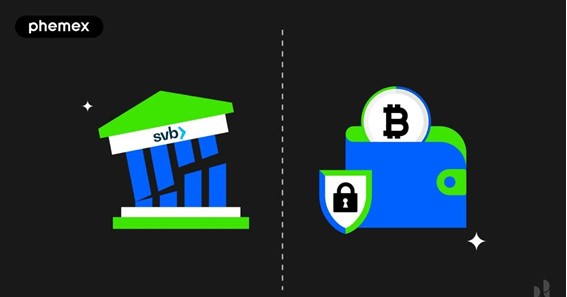Mid-sized American banks have recently been dealing with a serious dilemma. A few faced bank runs, some were forcibly shut down by regulators, and several saw a sharp decline in their market capitalization amid signs of systemic failure. What may we infer from the suddenness of this situation? More decentralization can be adopted by the global financial ecosystem to provide protection as traditional banking may not be as reliable as most people think.
What is SVB: The Crisis Facing Small U.S. Banks
A local Silicon Valley bank failed, which set off this chain of events. SVB’s collapse on March 10, 2023, following a bank run, making it the second-largest bank failure in American history and the most catastrophic since the 2008 financial crisis. Their main issue was that they invested deposits in long-term Treasury bonds with relatively modest returns, only to find themselves in a time when interest rates were rising which made such long-term assets considerably less appealing. In order to meet its obligations to depositors, the bank was compelled to sell securities and incur a $1.8 billion loss.
Due to widespread reduction in depositor confidence, this incident brought to light a problem that other mid-sized regional banks in the United States are currently dealing with. The stock prices of numerous other regional banks fell. The U.S. federal government chose to intervene and made the announcement to protect depositors from banks facing precarious situations.
Click here – Why Is CelluAid Controversial?
Crypto as a Trustworthy Alternative to TradFi Banks
Even if bank failures are usually the result of several causes with no single cause to point the finger at, the current predicament still reveals some unanticipated fragilities inside the reputable traditional banking system. The federal reserve and these mid-sized banks probably acted in good faith in an effort to give their clients and residents stable economic conditions, but the system nonetheless displayed flaws. Decentralized finance and the blockchain provide a more reliable alternative in many aspects.
First and foremost, it’s crucial to keep in mind that cryptocurrencies were initially developed in reaction to perceived shortcomings with traditional banking. Bitcoin’s creator, Satoshi Nakamoto, saw how the banks’ reckless lending of depositor money to create credit bubbles while holding little in reserve led to the global financial crisis in 2008. Satoshi argued in a blog post that the conventional monetary system relied too heavily on trust and that cryptographic proofs might take its place. Despite a recent price association between cryptocurrencies and the overall economy, it is important to remember that cryptocurrencies and conventional banks are substitutes rather than complementary products.
Click here – Colorado Lawyers in put on Personal Injury Car Accidents: Major mistakes
In contrast to traditional banks that use a fractional reserve system, most DeFi crypto projects are overcollateralized. Fractional banking can result in banking system instability when unexpected changes in market conditions or depositor behavior occur. However, Phemex, a secure and efficient cryptocurrency exchange, has all its deposits reserved and can be verified on-chain using their Proof-of-Reserve system. Blockchain technology offers complete transparency due to its code-governed mechanisms, and platforms like Phemex are facilitating this transparency while providing user-friendly interfaces to bridge the gap for regular users.

